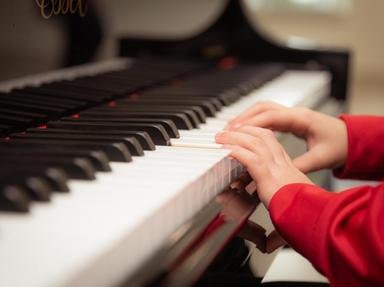Quiz Answer Key and Fun Facts
1. What are the main strings of a violin?
2. At the beginning of a piece of music, there is a little pattern of lines called sharps. If you have 1 sharp, what sharp should you play?
3. There are two funny shaped holes in your violin. What are these called?
4. What is the deepest note you can play on a violin?
5. If there are no sharps at the beginning of a piece of music and you discover your tune has a C sharp without a sharp anywhere near it, what do you do?
6. What should you put on the hair of your bow before playing?
7. What will second finger on the E string give you?
8. What position is it called when you tuck your violin under your arm?
9. If I haven't got a sponge, what should I use to make my violin comfy on my shoulder?
10. What is second finger on the A string called?
Source: Author
meganread
This quiz was reviewed by FunTrivia editor
NatalieW before going online.
Any errors found in FunTrivia content are routinely corrected through our feedback system.

